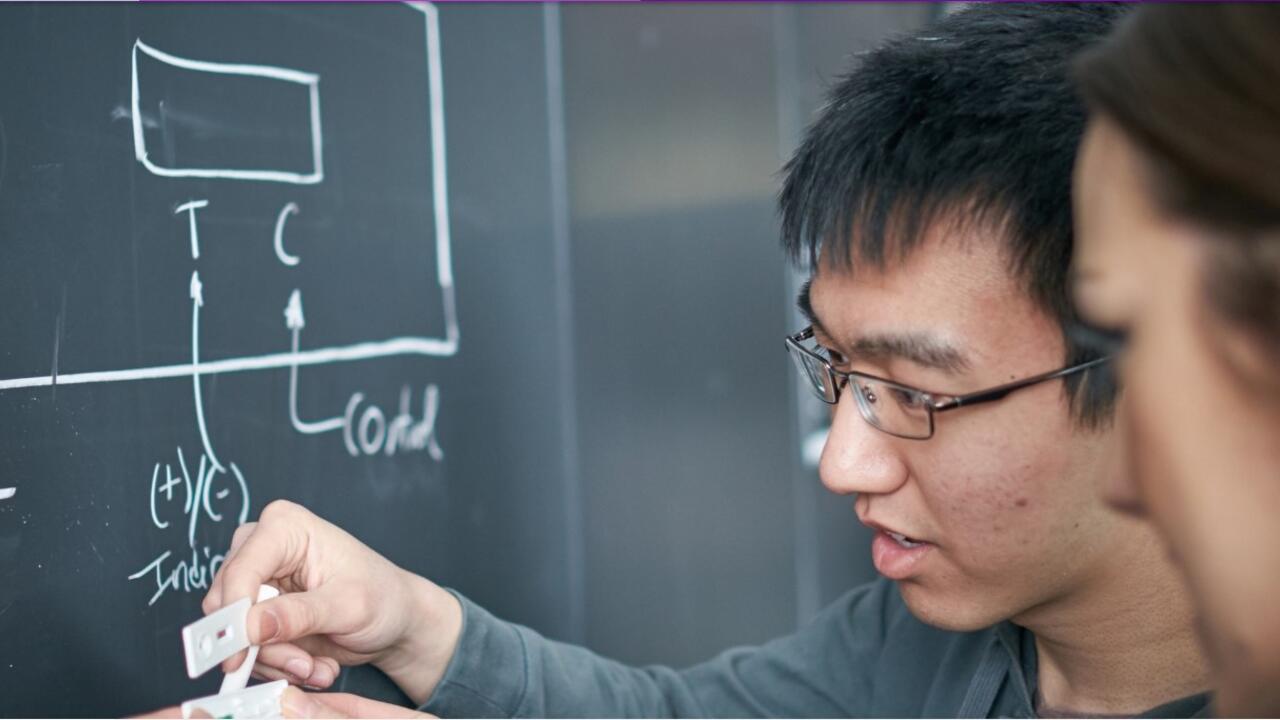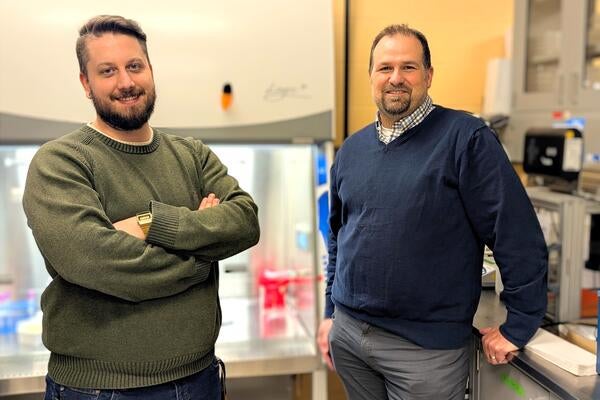
Medicine meets engineering
Waterloo's Biomedical Engineering program has received rave reviews and drawn industry excitement since its launch in 2014

Waterloo's Biomedical Engineering program has received rave reviews and drawn industry excitement since its launch in 2014
By Kelly Pedor Faculty of EngineeringComing from a family of engineers, Pascale Walters knew that Waterloo was her first choice for engineering, but picking a discipline wasn’t easy. She liked physics, kinesiology, mechatronics engineering and systems design engineering. Walters wasn’t sure how she would decide — until she came across Waterloo’s new biomedical engineering undergraduate program.
“This program combined all of my interests in one,” said Walters, now in her second year. “I love that it’s so multi-disciplinary. I didn’t know what I wanted to do and now I get to do everything.”
Since it launched in September 2014, Waterloo’s biomedical engineering program has been getting rave reviews from students and drawn industry excitement. “People are so excited that Waterloo finally has a biomedical engineering program that they really want to get involved,” said Program Director Maud Gorbet. “Partnerships are important because it’s a fast-evolving industry, so we need to ensure we are training students in the right way.”
Few universities have an undergraduate biomedical engineering program, and the ones that do offer a patchwork of courses from other disciplines. From the outset, Waterloo didn’t want to take a patchwork approach and wanted to ensure the curriculum was its own, said Gorbet. While the program’s professors come from across Waterloo’s engineering disciplines, the course content is tailored to biomedical engineering with a focus on design, said Gorbet.
Design is such a key part that first-year students tackle a project from conception to prototype. “That’s how you learn, by trying and failing,” said Gorbet. Walters’ design project, from idea to prototype, was developed to help paraplegic Paralympians get safely in and out of their kayaks from a dock with the aim to enable them to train more safely. Following the complete design process was a highlight of her first year. “It was great to get exposed from the beginning and get the design mindset,” Walters said. Another highlight was her first co-op term where she worked at Waterloo start-up Medella Health on a biosensor for a contact lens to monitor blood glucose levels in diabetics.
Like Walters, second-year student Dipika Sikka was impressed with the program’s focus on design. “While most engineering programs require their students to take physics, math and computer programming, the program’s focus on design is something that has definitely stood out for me,” she said. Sikka said she applied some of the design concepts she learned in some of the projects she worked on during her first co-op term with Trillium Health Partners. Indicating a success of the program and high industry support, over half of first-year students found their first co-op work placement in a health-related field, said Gorbet.
When Waterloo announced it was offering an undergraduate biomedical engineering program, the degree was meant to close the gap between medicine and engineering.
“I am confident the research advances and technologies that will emerge from this area will address some critical health-care challenges,” said Pearl Sullivan, Dean of Engineering.
The program has acquired extra lab space for next fall so students can have more hands-on experience. In its first year, the program was in high demand, attracting 700 applications for 45 openings. In its second year, the program’s popularity continued to soar with 950 applications for 55 spots. Gorbet said there are plans to grow the program to accepting 90 students a year by 2018, with gradual increases each year. Since the first class graduates in 2019, Gorbet said the next stage is thinking about a graduate program.

Read more
Here are the people and events behind some of this year’s most compelling Waterloo stories

Engineering master's student Nayeema Nonta (left), one of the three paper authors, and her supervisor, Dr. Sirisha Rambhatla, in a large server room with the computer power needed to develop their new LLM training technique. (University of Waterloo)
Read more
Waterloo researchers develop highly efficient AI training system that paves the way for cheaper, greener “intelligent partners”

Read more
Engineering researchers team up to tackle the plastics pollution problem with microbial innovation and engineering design
The University of Waterloo acknowledges that much of our work takes place on the traditional territory of the Neutral, Anishinaabeg, and Haudenosaunee peoples. Our main campus is situated on the Haldimand Tract, the land granted to the Six Nations that includes six miles on each side of the Grand River. Our active work toward reconciliation takes place across our campuses through research, learning, teaching, and community building, and is co-ordinated within the Office of Indigenous Relations.